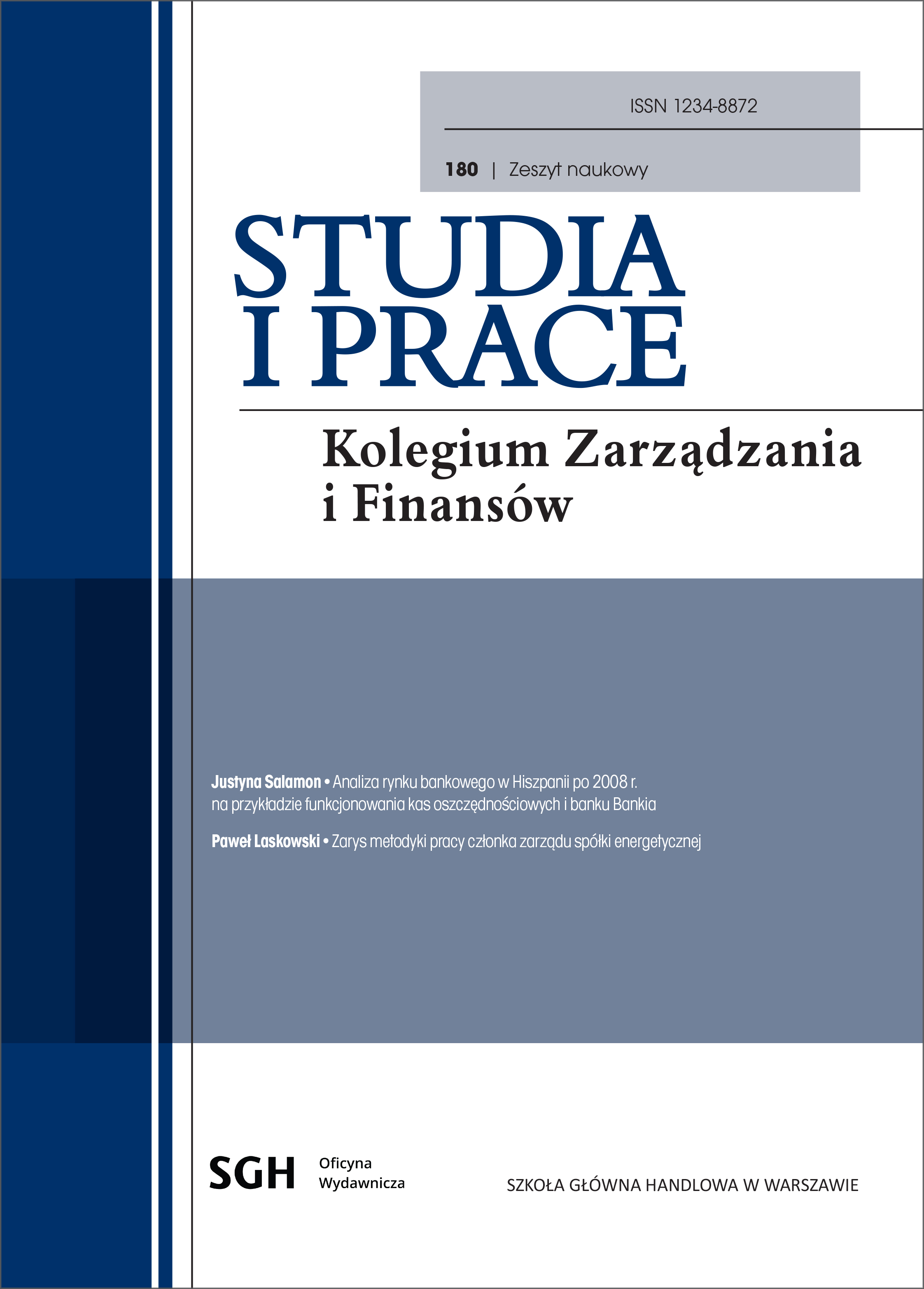Business Model and the Maturity of Agricultural Machinery Manufacturers: Conclusive Study
DOI:
https://doi.org/10.33119/SIP.2020.179.2Keywords:
business model, microfoundations of maturity, orientation of enterprises, agricultural machinery industryAbstract
Vast majority of issues concerning the competitiveness of manufacturing enterprises are inherently connected with adjustments to changing market needs which, in a longer perspective, justifies the development of selected business models. Against this context, studies were launched with a view to answer the question: What kind of business model has been absorbed by Polish enterprises from the agricultural machinery industry? Referring to the set objective outlined in this way, an indispensable action was recommended to evaluate the research model - being the resultant of the related literature exploration and discussion among deliberately selected experts (theoretical and design layer). This research was conducted among the Polish manufacturers of the agricultural machinery sector.
Downloads
References
2. Amit R., Zott Ch. [2010], Business Model Design: An Activity System Perspective, „Long Range Planning”, vol. 43.
3. Amit R., Zott Ch. [2012], Creating Value through Business Model Innovation, „MIT Sloan Review”, vol. 53, no. 3.
4. Aspara J., Lamberg J.A., Laukia A., Tikkanen H. [2013], Corporate Business Model Trans- formation and Inter-Organizational Cognition: The Case of Nokia, „Long Range Planning”, vol. 46, s. 459-474.
5. Baden-Fuller C., Morgan M. S. [2010], Business Models as Models, „Long Range Planning”, vol. 43.
6. Betz F. [2012], Strategic Business Models, „Engineering Management Journal”, 14(1), s. 14-29.
7. Brzóska J. [2009], Model biznesowy - współczesna forma modelu organizacyjnego zarządzania przedsiębiorstwem, „Organizacja i Zarządzanie”, nr 2(6).
8. Brzóska J. [2015], Modele biznesu a wykorzystanie innowacji w przedsiębiorstwach społecznych, „Organizacja i Zarządzanie”, z. 78, s. 51-69.
9. Casadesus-Masanell R., Rickart J. E. [2010], From Strategy to Business Models and onto Tactics, „Long Range Planning”, vol. 43, s. 195-215.
10. Chesbrough H. [2006], Open Business Models: How to Thrive in the New Innovation Landscape, Harvard Business School Press, Boston.
11. Currie W. [2004], Value Creation from E-Business Models, Elsevier, Oxford.
12. Cyfert S., Krzakiewicz K. [2011], Wykorzystanie koncepcji modeli biznesu w zasobowej teorii firmy, w: Rozwój szkoły zasobowej zarządzania strategicznego, red. R. Krupski, Wałbrzyska Wyższa Szkoła Zarządzania i Przedsiębiorczości, Wałbrzych.
13. Cyfert S. [2012], Granice organizacji, Wydawnictwo Uniwersytetu Ekonomicznego w Poznaniu, Poznań.
14. Duczkowska-Piasecka M., Poniatowska-Jaksch M., Duczkowska-Małysz K. [2013], Model biznesu. Nowe myślenie strategiczne, Difin, Warszawa.
15. Dudzik M. T., Lewandowska M., Witek-Hajduk M., Gołębiowski T. [2008], Modele biznesu polskich przedsiębiorstw, Szkoła Główna Handlowa w Warszawie, Warszawa.
16. Falencikowski T. [2013], Spójność modeli biznesu. Koncepcja i pomiar, CeDeWu, Warszawa.
17. Fisken J., Rutherford J. [2002], Business Models and Investments. Trends in the Biotechnology Industry in Europe, „Journal of Commercial Biotechnology”, 8(3), s. 191-199.
18. Giesen E., Berman S.J., Bell R., Blitz A. [2007], Three Ways to Successfully Innovate Your Business Model, „Strategy & Leadership”, vol. 35, no. 6.
19. Gorynia M., Jankowska B., Pietrzykowski M., Tarka P. [2009], Wpływ przyjęcia euro na międzynarodową konkurencyjność przedsiębiorstw Wielkopolski, „Gospodarka Narodowa”, 4(212).
20. Gorynia M., Mroczek K. [2013], Koszty transakcyjne jako determinanta formy zagranicznej ekspansji przedsiębiorstwa, „Ekonomista”, nr 2.
21. Jabłoński M. [2013], Kształtowanie modeli biznesu w procesie kreacji wartości przedsiębiorstw, Difin, Warszawa.
22. Nogalski B., Niewiadomski P. [2014a], Koncepcja zwinnego zakładu wytwórczego - modelowanie wirtualnej struktury organizacyjnej w procesie wytwarzania, „Organizacja i Zarządzanie”, nr 4 (20).
23. Nogalski B., Niewiadomski P. [2014b], Technologia jako zasób implikujący granice elastyczności produktowej zakładu wytwórczego, „Studia i Prace Kolegium Zarządzania i Finansów”, nr 136.
24. Nogalski B., Szpitter A., Brzóska J. [2017], Modele i strategie biznesu w obszarze dystrybucji energii elektrycznej w Polsce, Wydawnictwo Uniwersytetu Gdańskiego, Gdańsk.
25. Nogalski B., Szpitter A., Jabłoński M. [2016], Zarządzanie projektami w kształtowaniu elastycznych modeli biznesu operatorów systemu dystrybucyjnego, Wydawnictwo Uniwersytetu Gdańskiego, Gdańsk.
26. Osterwalder A. [2004], The Business Model Ontology: A Proposition in a Design Science Approach, University of Lausanne, Lausanne.
27. Peterovic O., Kittl C., Teksten R. [2001], Developing Business Models for e-Business, International Conference on Electronic Commerce, Vienna.
28. Teece D. J. [2010], Business Models, Business Strategy and Innovation, „Long Range Planning”, 43, s. 172-194.
29. Watson D. [2005], Business Models, Harriman House Ltd., Petersfield.









